
On 5 December 1496, King Manuel I of Portugal signed the decree of expulsion of Jews and Muslims to take effect by the end of October of the next year. [1]

On 5 December 1496, King Manuel I of Portugal signed the decree of expulsion of Jews and Muslims to take effect by the end of October of the next year. [1]
Until the 15th century, some Jews occupied prominent places in Portuguese political and economic life. For example, Isaac Abrabanel was the treasurer of King Afonso V of Portugal. Many also had an active role in Portuguese culture, and they kept their reputation of diplomats and merchants. By this time, Lisbon and Évora were home to important Jewish communities.

On 5 December 1496, King Manuel I of Portugal decreed that all Jews must convert to Catholicism or leave the country, in order to satisfy a request by the Catholic Monarchs of Spain during the negotiations of the contract of marriage between himself and their eldest daughter Isabella, Princess of Asturias, as an unstated condition to win her hand. [2] The King demonstrated his wish to completely and forever eradicate Judaism from Portugal by issuing two decrees. [1] The initial edict of expulsion of 1496 was turned into an edict of forced conversion in 1497, whereby Portuguese Jews were prevented from leaving the country and were forcibly baptized and converted to Christianity. [3] Those Jews who refused to pay taxes in protest were deported from Portugal and abandoned to their fate in the islands of São Tomé and Príncipe, off the western coast of Africa. [4] Hard times followed for the Portuguese conversos, with the massacre of 2,000 people in Lisbon in 1506, and later the establishment of the Portuguese Inquisition in 1536.

When the King allowed conversos to leave after the Lisbon massacre of 1506, many went to the Ottoman Empire, notably Salonica and Constantinople, and to the Wattasid Sultanate of Morocco. Smaller numbers went to Amsterdam, France, Brazil, Curaçao and the Antilles, Surinam and New Amsterdam. In some of these places their presence can still be perceived in the use of the Ladino language by some Jewish communities in Greece and Turkey, the Portuguese-based dialects of the Antilles, or the multiple synagogues built by those who became known as the Spanish and Portuguese Jews, such as the Amsterdam Esnoga or the Willemstad Snoa. Some of the most famous descendants of Portuguese Jews who lived outside Portugal are the philosopher Baruch Spinoza (Bento de Espinosa in Portuguese), and the classical economist David Ricardo.
Jews who converted to Christianity were known as New Christians, and were always under the constant surveillance of the Inquisition. The Holy Office in Portugal lasted for almost three hundred years, until the Portuguese Inquisition was abolished in 1821 by the "General Extraordinary and Constituent Courts of the Portuguese Nation". Many of those New Christians were crypto-Jews who continued to secretly practice their religion; they eventually left the country in the centuries to come, and openly embraced their Jewish faith again in foreign lands. Such was the case, for example, of the ancestors of Baruch Spinoza in the Netherlands. Some other Portuguese Jews, very few in number like the Belmonte Jews, opted for a different and radical solution, practicing their faith in a strictly secret manner among a rural and isolated community. Known as the "Last of the Marranos", some have survived until today (especially the Jewish community from Belmonte in Castelo Branco, plus some scattered families) by their practice of intermarriage and their very limited cultural contacts with the outside world. Only recently, in the late 20th century, have they re-established contact with the international Jewish community and openly practice their religion in a public synagogue with a formal rabbi. [5]
According to contemporary historian François Soyer, the expulsion of Muslims from Portugal has been overshadowed by the forced conversion of Jews in the country. [6] While tolerance of Muslim minorities in Portugal was higher than in any other part of Europe, [7] Muslims were still perceived as "alien." [8] Anti-Muslim riots were regular in neighboring Valencia during the 1460s; however, no similar acts of violence occurred in Portugal. [7]
In December 1496, Manuel I ordered all Muslim subjects to leave without any apparent provocation. [9] According to 15th-century Portuguese historians Damião de Góis and Jerónimo Osório, the Portuguese government originally planned to forcibly convert or execute Muslims as they had done to Jews, but fear of retaliation from Muslim kingdoms in North Africa led the king to settle on deportations instead. [10] Manuel I's motivation behind the order is unclear, but some contemporary historians say it was part of a greater goal of Queen Isabella and King Ferdinand (known as the "Catholic Monarchs") to rid the peninsula of Muslims and create "religious uniformity" and "monolithic Catholic Christian unity". [11] Other historians say it was influenced by ambitions of conquering Morocco, [12] or by the suggestion of the Dominican confessor to the king, Friar Jorge Vogado. [13] Some Muslims found refuge in Castile, [14] but most fled to North Africa. [15]
In the 19th century, some affluent families of Sephardi Jewish Portuguese origin such as the Ruah and Bensaude, resettled in Portugal from Morocco. The first synagogue to be built in Portugal since the 15th century was the Lisbon Synagogue, inaugurated in 1904. [16]
In 2014 the Portuguese parliament changed the Portuguese nationality law in order to grant Portuguese nationality to descendants of Sephardi Jews expelled from Portugal. The law is a reaction to historical events that led to their expulsion from Portugal, but also due to increased concerns over Jewish communities throughout Europe. In order to obtain Portuguese nationality, the person must attest being a direct descendant of a Sephardi of Portuguese origin or family connections in a collateral line from a former Portuguese Sephardi community. Use of expressions in Portuguese in Jewish rites or Judaeo-Portuguese or Ladino can also be considered proof. [17]
From 2015 several hundred Turkish Jews who were able to prove descent from Portuguese Jews expelled in 1497 emigrated to Portugal and acquired Portuguese citizenship. [18] [19] [20]

SephardicJews, also known as Sephardi Jews or Sephardim, and rarely as Iberian Peninsular Jews, are a Jewish diaspora population associated with the Iberian Peninsula. The term, which is derived from the Hebrew Sepharad, can also refer to the Jews of the Middle East and North Africa, who were also heavily influenced by Sephardic law and customs. Many Iberian Jewish exiled families also later sought refuge in those Jewish communities, resulting in ethnic and cultural integration with those communities over the span of many centuries.
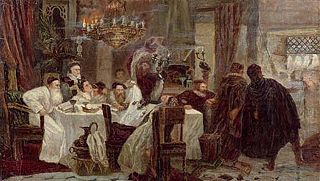
Marranos is one of the terms used in relation to Spanish and Portuguese Jews who converted or were forced by the Spanish and Portuguese crowns to convert to Christianity during the fifteenth and sixteenth centuries, but continued to practice Judaism in secrecy or were suspected of it, referred to as Crypto-Jews. "Crypto-Jew" is the term increasingly preferred in scholarly works, instead of Marrano.

A converso, "convert", was a Jew who converted to Catholicism in Spain or Portugal, particularly during the 14th and 15th centuries, or one of their descendants.
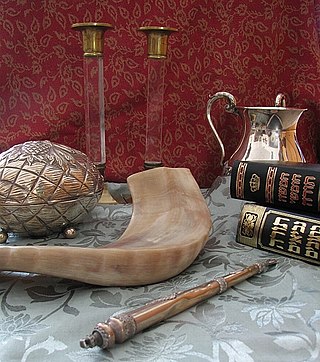
Crypto-Judaism is the secret adherence to Judaism while publicly professing to be of another faith; practitioners are referred to as "crypto-Jews".
New Christian was a socio-religious designation and legal distinction in the Spanish Empire and the Portuguese Empire. The term was used from the 15th century onwards primarily to describe the descendants of the Sephardic Jews and Moors baptised into the Catholic Church following the Alhambra Decree. The Alhambra Decree of 1492, also known as the Edict of Expulsion, was an anti-Jewish law made by the Catholic Monarchs upon the Reconquista of the Iberian Peninsula. It required Jews to convert to Catholic Christianity or be expelled from Spain. Most of the history of the "New Christians" refers to the Jewish converts, who were generally known as Conversos while the Muslim converts were known as Moriscos.

The Alhambra Decree was an edict issued on 31 March 1492, by the joint Catholic Monarchs of Spain ordering the expulsion of practising Jews from the Crowns of Castile and Aragon and its territories and possessions by 31 July of that year. The primary purpose was to eliminate the influence of practising Jews on Spain's large formerly-Jewish converso New Christian population, to ensure the latter and their descendants did not revert to Judaism. Over half of Spain's Jews had converted as a result of the religious persecution and pogroms which occurred in 1391. Due to continuing attacks, around 50,000 more had converted by 1415. A further number of those remaining chose to convert to avoid expulsion. As a result of the Alhambra decree and persecution in the years leading up to the expulsion of Spain's estimated 300,000 Jewish origin population, a total of over 200,000 had converted to Catholicism to remain in Spain, and between 40,000 and 100,000 remained Jewish and suffered expulsion. An unknown number of the expelled eventually succumbed to the pressures of life in exile away from formerly-Jewish relatives and networks back in Spain, and so converted to Catholicism to be allowed to return in the years following expulsion.:17
Limpieza de sangre, also known as limpeza de sangue or neteja de sang, literally "cleanliness of blood" and meaning "blood purity", was a racially discriminatory term used in the Spanish and Portuguese Empires during the early modern period to refer to those who were considered to be Old Christians by virtue of not having Muslim or Jewish ancestors. In both empires, the term played a major role in discrimination against suspected crypto-Jews or crypto-Muslims. Over the years it manifested into law which excluded New Christians from almost every part of society. In Spain's American colonies, it helped define the casta system and was expanded to include those who were not of indigenous or African descent.
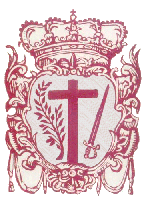
The Portuguese Inquisition, officially known as the General Council of the Holy Office of the Inquisition in Portugal, was formally established in Portugal in 1536 at the request of its king, John III. Although Manuel I had asked for the installation of the Inquisition in 1515 to fulfill the commitment of his marriage with Maria of Aragon, it was only after his death that Pope Paul III acquiesced. In the period after the Medieval Inquisition, it was one of three different manifestations of the wider Christian Inquisition, along with the Spanish Inquisition and Roman Inquisition. The Goa Inquisition was an extension of the Portuguese Inquisition in colonial-era Portuguese India.

The history of the Jewish community in Belmonte, Portugal, dates back to the 13th century; the community was composed of Spanish and Portuguese Jews who kept their faith through crypto-Judaism.
Spanish and Portuguese Jews, also called Western Sephardim, Iberian Jews, or Peninsular Jews, are a distinctive sub-group of Sephardic Jews who are largely descended from Jews who lived as New Christians in the Iberian Peninsula during the few centuries following the forced expulsion of unconverted Jews from Spain in 1492 and from Portugal in 1497. They should therefore be distinguished both from the descendants of those expelled in 1492 and from the present-day Jewish communities of Spain and Portugal.

The history of the Jews in Portugal reaches back over two thousand years and is directly related to Sephardi history, a Jewish ethnic division that represents communities that originated in the Iberian Peninsula. In the sixteenth and seventeenth centuries, Portuguese Jews emigrated to a number of European cities outside Portugal, where they established new Portuguese Jewish communities, including in Hamburg, Antwerp, and the Netherlands, which remained connected culturally and economically, in an international commercial network during the seventeenth and eighteenth centuries.

The Portuguese Synagogue, also known as the Esnoga, or Snoge, is a late 17th-century Sephardic synagogue in Amsterdam, completed in 1675. Esnoga is the word for synagogue in Judaeo-Spanish, the traditional Judaeo-Spanish language of Sephardi Jews.
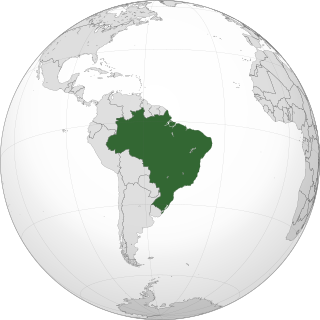
The history of the Jews in Brazil begins during the settlement of Europeans in the new world. Although only baptized Christians were subject to the Inquisition, Jews started settling in Brazil when the Inquisition reached Portugal, in the 16th century. They arrived in Brazil during the period of Dutch rule, setting up in Recife the first synagogue in the Americas, the Kahal Zur Israel Synagogue, as early as 1636. Most of those Jews were Sephardic Jews who had fled the Inquisition in Spain and Portugal to the religious freedom of the Netherlands.
Old Christian was a social and law-effective category used in the Iberian Peninsula from the late 15th and early 16th century onwards, to distinguish Portuguese and Spanish people attested as having cleanliness of blood, known as Limpieza de sangre, from the populations categorized as New Christian. 'New Christian' refer to mainly persons of partial or full Jewish or Moorish (Muslim) descent who converted to Christianity, and their descendants.
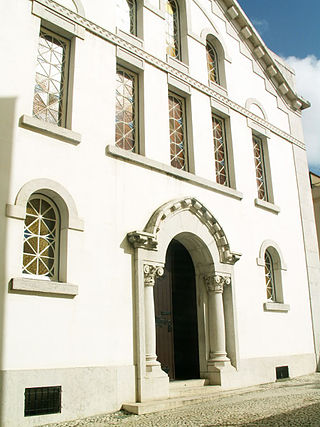
The Lisbon Synagogue is a historical synagogue situated in the civil parish of Santo António, in the municipality of Lisbon, Portugal.

Sephardic Jews in India are Iberian Jews who settled in many coastal towns of India, in Goa and Damaon, Madras and, primarily and for the longest period, on the Malabar coast in Cochin. After the Portuguese discovery of the sea route to India in the 1498, a number of Sephardic Jews fled Antisemitism in Iberia which had culminated in the Edict of Expulsion in 1492 and Persecution of Jews and Muslims by Manuel I of Portugal. They settled in Portuguese Indian trading places so that they could continue practicing Judaism secretly while still remaining within the Portuguese Empire. After the Portuguese Inquisition was established, an additional number of falsely-converted Sephardic Jews made sea voyages to settle in India, because it would then be difficult for the Inquisition to investigate and punish them. They spoke the vernacular language of their kingdom and some of them also Arabic.
Sephardic Bnei Anusim is a modern term which is used to define the contemporary Christian descendants of an estimated quarter of a million 15th-century Sephardic Jews who were coerced or forced to convert to Catholicism during the 14th and 15th century in Spain and Portugal. The vast majority of conversos remained in Spain and Portugal, and their descendants, who number in the millions, live in both of these countries. The small minority of conversos who did emigrate normally chose to emigrate to destinations where Sephardic communities already existed, particularly to the Ottoman Empire and North Africa, but also to more tolerant cities in Europe, where many of them immediately reverted to Judaism. In theory, very few of them would have traveled to Latin America with colonial expeditions, as only those Spaniards who could certify that they had no recent Muslim or Jewish ancestry were supposed to be allowed to travel to the New World. Recent genetic studies suggest that the Sephardic ancestry present in Latin American populations arrived at the same time as the initial colonization, which suggests that significant numbers of recent converts were able to travel to the new world and contribute to the gene pool of modern Latin American populations despite an official prohibition on them doing so. In addition, later arriving Spanish immigrants would have themselves contributed additional converso ancestry in some parts of Latin America.
Eastern Sephardim are a distinctive sub-group of Sephardic Jews mostly descended from Jewish families which were exiled from Iberia in the 15th century, following the Alhambra Decree of 1492 in Spain and a similar decree in Portugal five years later. This branch of descendants of Iberian Jews settled across the Eastern Mediterranean.
The Festival of Santa Esterica is a holiday that was created as a substitute for Purim by the Anusim after their expulsion from Spain in the late 15th century. It is still celebrated today in Latin America and the Southwestern United States.
The history of the Jews in the Canary Islands dates to the 15th century, when converted Jews moved to the islands from the Iberian Peninsula and continued practicing their religion in secrecy. The contemporary Jewish community is small and is mostly composed of Sephardi Jews who migrated to the islands in their mid-twentieth century and their descendants.
Soyer, François (2007). The Persecution of the Jews and Muslims of Portugal: King Manuel I and the End of Religious Tolerance (1496–7). Leiden, The Netherlands: Koninklijke Brill NV. ISBN 9789004162624 . Retrieved 15 May 2017.